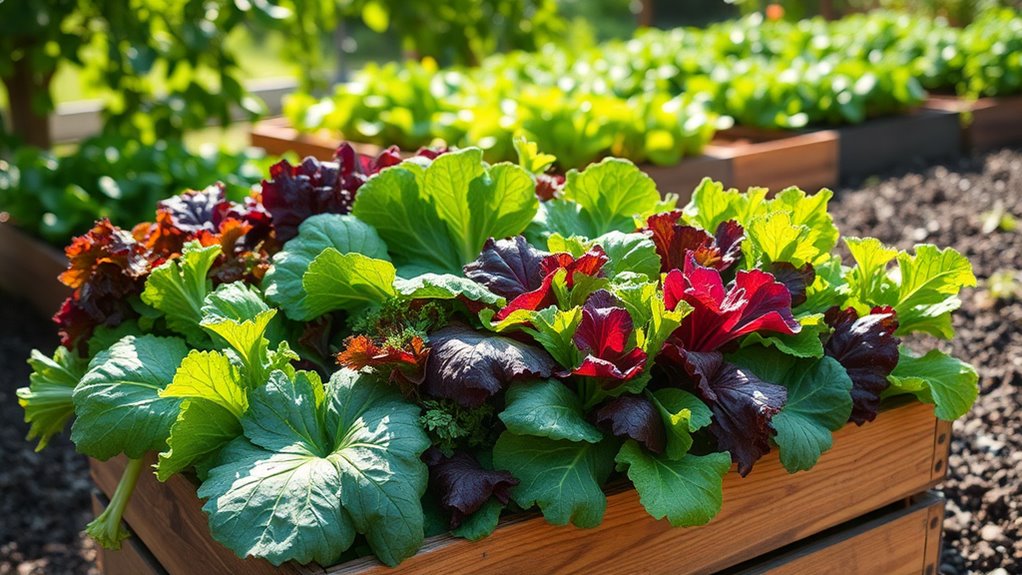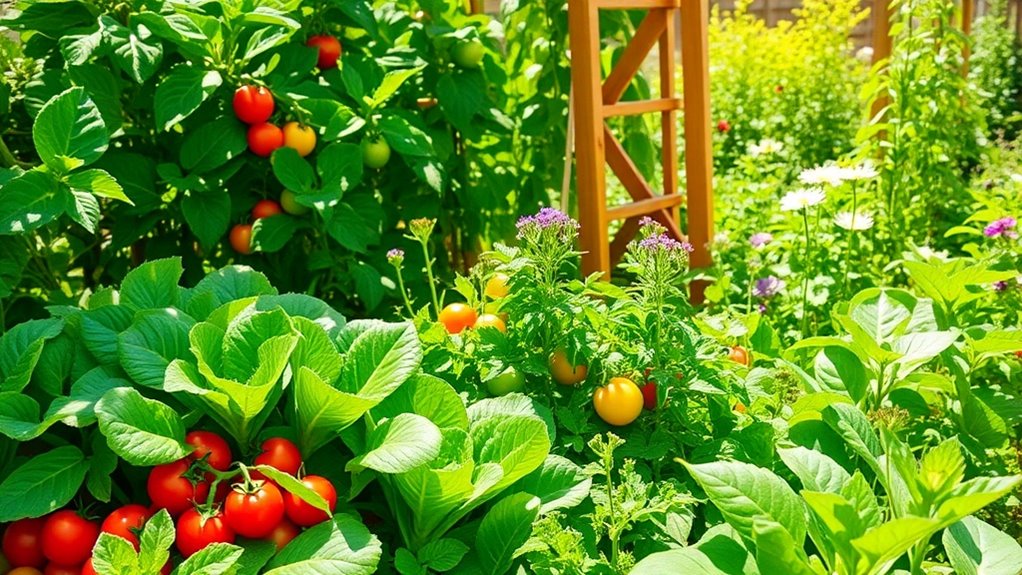The Simple Way I Grow Fresh Salad Greens Every Week
Did you know that homegrown vegetables can be up to 50% more nutrient-dense than store-bought options? Growing your own salad greens is a straightforward way to ensure a steady supply of fresh, healthy produce right at your fingertips. By selecting the right varieties, preparing your space correctly, and managing their growth conditions, you can enjoy an abundant harvest each week. Let’s explore how you can achieve this efficient garden setup.
Choosing the Right Salad Green Varieties
To grow salad at home successfully, consider factors like climate, soil type, and your taste preferences. Popular choices include romaine, arugula, and spinach. Opt for fast-growing varieties that thrive in your conditions. Experimenting with mixed greens can also yield diverse flavors while maximizing space in your garden. Additionally, understanding your balkony growing conditions can help you make better choices for your salad garden. Select wisely for a bountiful harvest!
Preparing Your Growing Space
Before you plant your salad greens, preparing your growing space is crucial for success.
Start by selecting a site with at least six hours of sunlight and well-draining soil. Clear away weeds and debris, then amend the soil with organic compost to enhance fertility. Additionally, consider incorporating key factors like plant selection to maximize the health and productivity of your garden. Finally, ensure proper water access, as consistent moisture is vital for seed germination and healthy plant growth.
Sowing Seeds and Initial Care
Once you’ve prepared your growing space, sowing seeds accurately is essential to ensure optimal growth.
Plant seeds at the recommended depth, spacing them according to variety specifications. Water gently to avoid displacing seeds.
Cover lightly with soil, maintaining even moisture. This initial care promotes proper germination and establishes a healthy root system, setting the foundation for robust salad greens in your garden. Additionally, choosing fast salad greens can significantly reduce the time from planting to harvest.
Maintaining Optimal Growing Conditions
To ensure your salad greens thrive, maintaining optimal growing conditions is crucial, especially in the early stages of growth. Monitor factors like temperature, light, and moisture to promote healthy development. Additionally, using appropriate container choices can enhance the growth of your salad greens by providing adequate space and drainage.
| Condition | Optimal Range |
|---|---|
| Temperature | 60-70°F (15-21°C) |
| Light | 12-16 hours/day |
| Moisture | Slightly damp |
| Soil pH | 6.0-7.0 |
| Air Circulation | Good airflow |
Harvesting Techniques for Fresh Greens
Harvesting fresh salad greens requires attention to timing and technique to ensure optimal flavor and quality.
For best results, pick leaves in the morning when moisture levels are high. Use sharp scissors or shears to cut above the root, encouraging regrowth.
Harvest visibly healthy leaves, avoiding any damaged or discolored items. This method not only enhances taste but also promotes continuous growth for future harvests. To maintain a sustainable source of fresh greens, consider implementing reusable gardening techniques that support ongoing harvests throughout the season.
Tips for Continuous Sowing and Growth
Maintaining a steady supply of fresh salad greens throughout the growing season involves implementing effective continuous sowing techniques.
Plant seeds in staggered intervals every 7 to 14 days. Choose fast-growing varieties, like arugula and lettuce, to ensure a quick turnaround.
Monitor soil moisture and fertility to support healthy growth, and always harvest leaves regularly to encourage further production. Incorporating cut and come again greens into your selections can further enhance your harvest quality and yield.
Keep records to optimize future sowing schedules.





